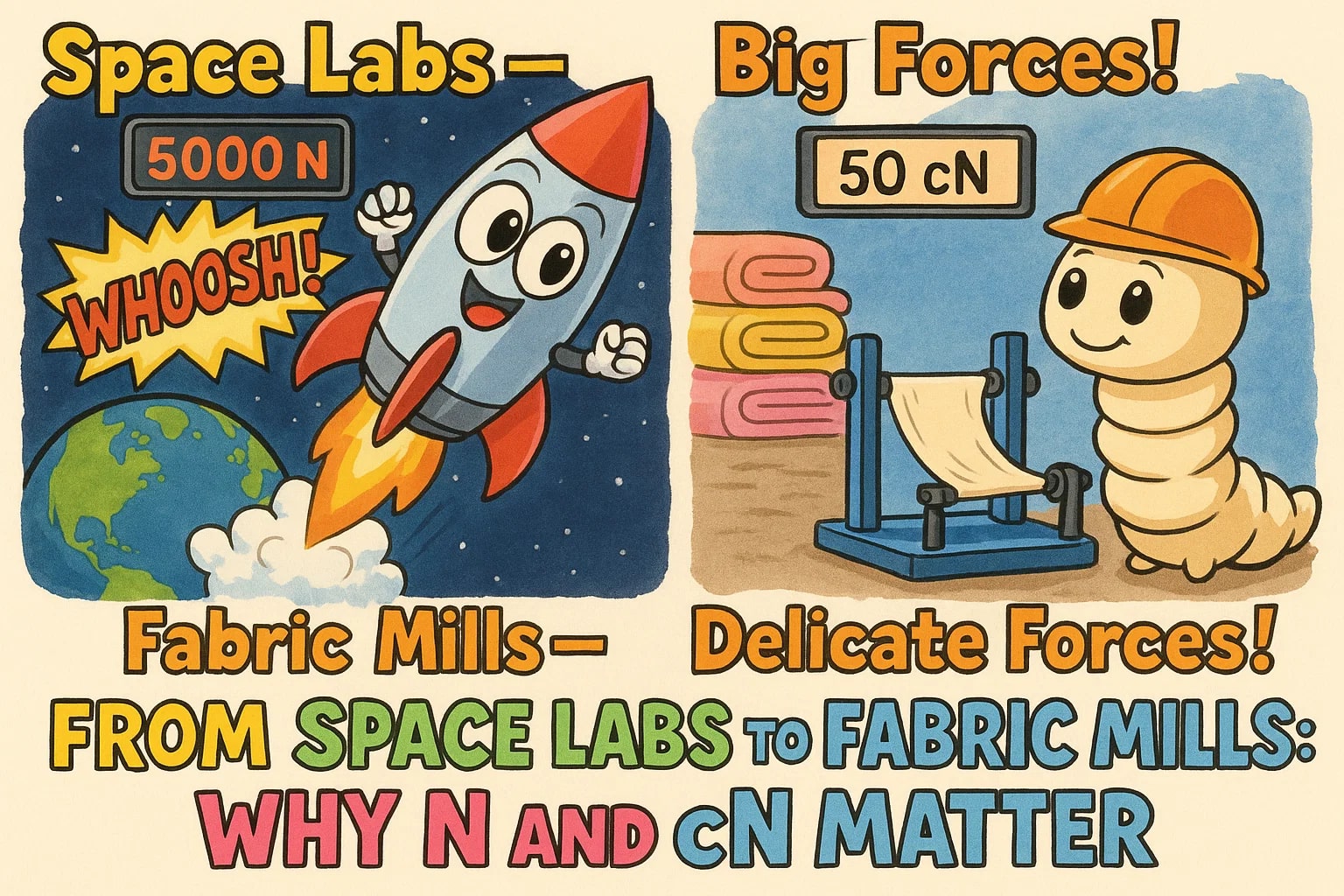Newton to Centinewton – How to convert N to cN
Looking to convert newton to centinewton? Whether you’re analyzing force in engineering, physics experiments, or industrial testing, understanding how to express force in different scales is essential. Let’s break down what these units mean, how to calculate them, and why they’re more than just numbers on a page.

What is a newton (N)?
The newton (N) is the SI unit of force, named after Sir Isaac Newton. One newton is the force required to accelerate a mass of one kilogram by one meter per second squared (1 kg·m/s²). This unit is used worldwide in physics, engineering, and mechanics — from designing machines to testing material strength. It’s also the standard unit for most scientific research and industrial specifications.
The newton traces its origin to classical mechanics and remains vital in calculating loads, pressures, and dynamic systems. For example, when you push a 100 g object on Earth, gravity exerts nearly 1 N of force.
What is a centinewton (cN)?
A centinewton (cN) is a subunit of the newton, where 1 N = 100 cN. The prefix “centi-” denotes one‑hundredth, meaning a centinewton is one‑hundredth of a newton. This unit is commonly used in industries like textiles and precision mechanics, where forces are measured in smaller, more sensitive ranges.
For example, testing the tensile strength of a single fiber in fabric often requires readings in centinewtons rather than whole newtons, as the forces involved are small yet crucial for quality assurance.
Conversion formula
Converting between these units is straightforward because the relationship is decimal‑based:
1 N = 100 cN
Force (cN) = Force (N) × 100
Example:
Suppose you measure a force of 2½ N on a spring scale and want it in centinewtons:
2½ N × 100 = 250 cN.
So, 2½ N = 250 cN.
For other types of unit conversions, you can also explore Conversion tools or navigate to a relevant category such as the Force Converter if working with length‑based measurements in related calculations.
Did you know?
-
The newton is derived directly from Newton’s Second Law of Motion, formalized in 1687, which is still the foundation of modern mechanics.
-
The centinewton is commonly used in textile testing, where the breaking force of a single yarn strand can be just a few cN.
-
In the European Union, many packaging and tensile testing standards specify centinewtons for clarity, as it avoids decimal-heavy measurements in newtons.
-
The average grip strength of an adult human hand is about 300–500 N, or 30 000–50 000 cN — which is why centinewtons are only practical for small‑scale force testing.
-
Digital load cells in laboratories often display results in centinewtons to accommodate delicate measurements, such as in medical device testing.
From Space Labs to Fabric Mills: Why N and cN Matter
Force measurements in newtons and centinewtons play surprisingly different roles in science and industry. In aerospace research, spacecraft components undergo rigorous force testing measured in newtons because of the large‑scale forces involved — for instance, simulating the thrust needed to escape Earth’s gravity.
On the other hand, textile manufacturers rely on centinewtons when testing fabrics for tear resistance. A lightweight fabric like silk might fail under just 50 cN, while industrial‑grade materials are tested in thousands of cN. Both units allow industries to work with precision at vastly different scales, ensuring safety, quality, and innovation.

Why converting newton to centinewton makes sense
Switching between newton and centinewton is more than a mathematical exercise — it ensures accuracy and practicality in reporting results. Large forces are easier to express in newtons, but for sensitive measurements, centinewtons eliminate cumbersome decimals.
When working across engineering projects, textile testing, or scientific studies, using the right unit can simplify reporting and enhance clarity. Use our Jetcalculator Conversion tools or related resources like the Length Converter when dealing with complex calculations that span multiple unit types.
Whether you’re building spacecraft or testing a thread’s strength, converting newton to centinewton keeps your work precise and standardized.

